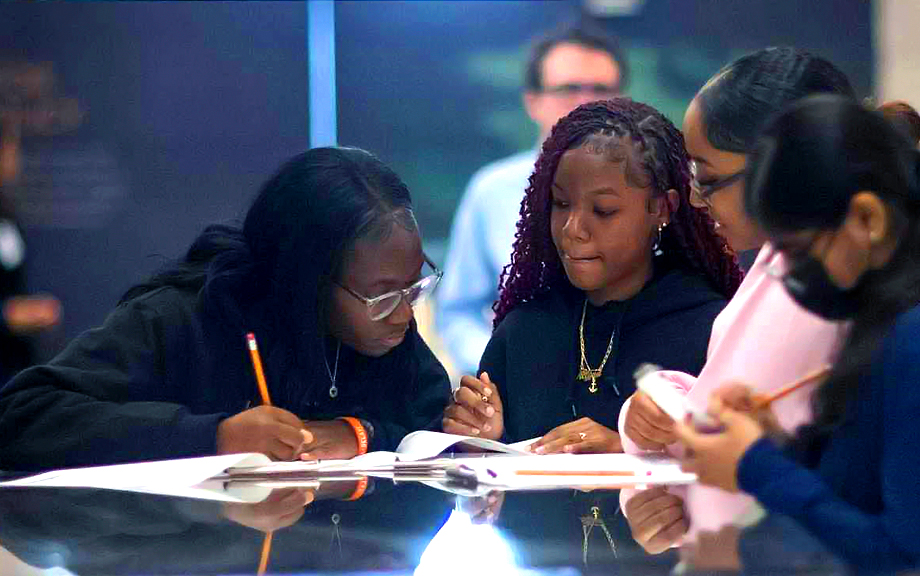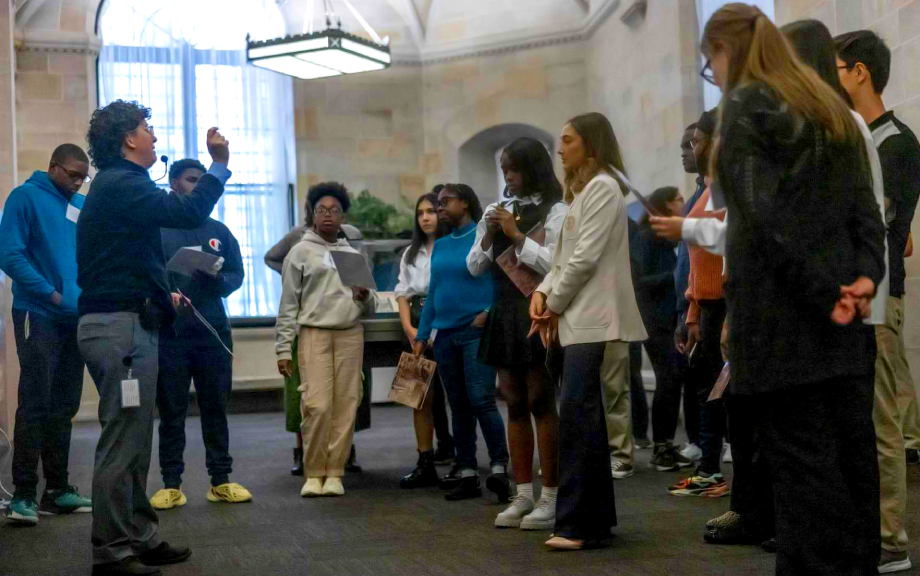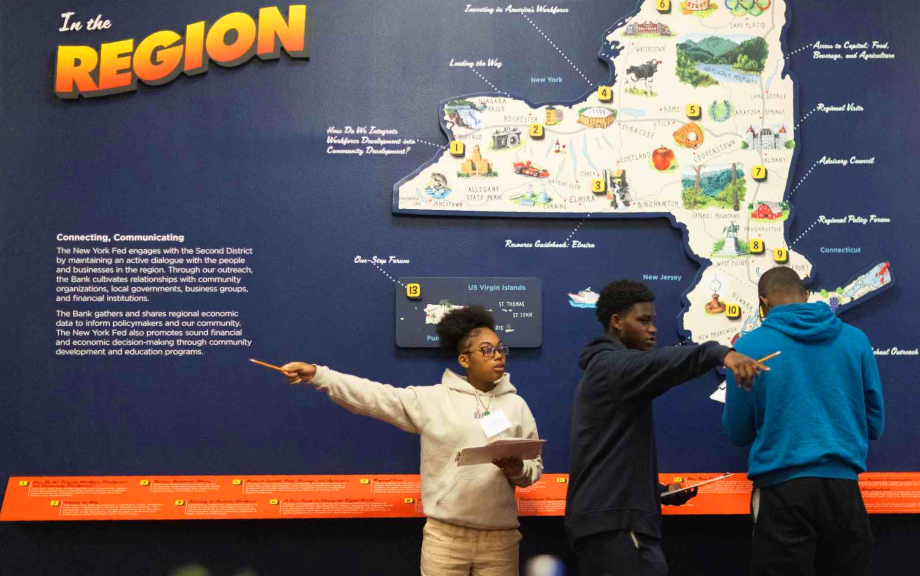
The high school students sitting in small groups in the New York Fed’s Museum and Learning Center had received clear instructions about the 30 paper slips on each group’s table: Using their non-dominant hands, students could grab one piece of paper at a time during each of five 20-second rounds. At the end of each round, each group would receive either double the number of slips left on the table or 10 additional slips. The goal: Maximize the number of paper slips held by each group.
Heather Daly, director of outreach and education at the New York Fed, called for the teams to start. A flurry of paper snatching ensued.
After the five rounds had ended, the students tallied their individual paper slips and discussed what they’d done—and what they could have done differently. Had they left all the slips on the table, each group would have had more collectively. By thinking about the desired outcome and working together, the teams would have met their objective.
“How could policies incentivize individuals—and companies—to modify their actions to benefit society?” Daly asked. “Sometimes the answer is right in front of us, but it can be hard to see.”
The discussion that followed detailed the economic concept of public goods, using examples such as clean air and fisheries for illustration.
The exercise was part of a program called HE³AT, run in partnership with the New York City Department of Education and Brooklyn South district high schools. The place-based education program, whose name stands for Healthcare, Energy, Education, Environment, Agriculture, and Technology, includes eight sites at businesses and institutions around New York City. The New York Fed joined as a site last year, with the effort spearheaded by the Economic Education team.

As part of the program at the New York Fed, 28 students selected from Brooklyn South high schools are visiting the Museum and Learning Center at New York Fed for nine full school days during the 2022-2023 academic year. At the end of the school year, each team will deliver a research paper incorporating some of the economic concepts they’ve learned and proposing a solution to a problem they have identified in one of the HE³AT focus areas.
Brooklyn South high schools largely serve students from economically disadvantaged households, and the program aims to help students develop skills they need to pursue their interests and passions, while also connecting what they learn in school to a wide variety of careers. HE³AT also has sites at Google and Microsoft.
“I’m so excited about the opportunity that the HE³AT program gives our students: An opportunity to couple their classroom studies with real-world career applications,” School Chancellor David C. Banks said at the September kick-off event for the New York Fed HE³AT site. “This is exactly the type of programming that we want to see in our schools as we work towards making sure all of our students can translate their skills into viable career paths and long-term economic security.”
While at the Fed, students learn to think like economists, growing familiar with concepts such as the labor market, scarcity, and trade-offs. New York Fed educators introduce the students to a new economic indicator each month, then ask them to write about their personal experience related to the data set. October’s economic indicator was the unemployment rate. On their worksheets, some of the students wrote about parents losing jobs during the COVID shutdowns, and how their families depended on stimulus checks.

The group also meets with New York Fed leaders, including Beverly Hirtle, director of research and head of the Research and Statistics Group; David Erickson, head of Community Development and Education; Pamela Dyson, chief information officer and head of the Technology Group; and John Williams, president and CEO.
President Williams spoke to the students earlier this month, telling them, “Our vision statement has three verbs in it: Anticipate, adapt, and act. We try to see where the future lies; we adapt to what’s happening; and, most importantly, we act. We’re not a think tank. We have to make decisions that are important for everyone, not just in the U.S., but around the world.”
The students asked President Williams about how he picked economics as a college major, his career trajectory, and what the Fed does when its monetary policy “goes awry.” Williams answered, “Our decisions have to be data dependent. The worst mistake we could make is to get stubborn.”
When the group met in December, Dyson told the students that her career grew as she learned new skills, moving from electronic publishing to foundational technology, working her way up to roles including chief information officer of the Securities and Exchange Commission.
“What would you tell your eleventh-grade self?” Daly asked.
“Strive for more,” Dyson answered. “Go for those loftier goals. Push yourself. Get a mentor as soon as you can. Find someone who’s going to test you and challenge you on those goals, not just a co-signer.”
The students, at tables cleared of all paper slips from the public goods exercise, took careful notes.
Learn more about the resources the New York Fed has for teachers and students.
Ellen Simon is a corporate communications specialist in the Communications and Outreach Group at the New York Fed.
The views expressed in this article are those of the contributing authors and do not necessarily reflect the position of the New York Fed or the Federal Reserve System.














